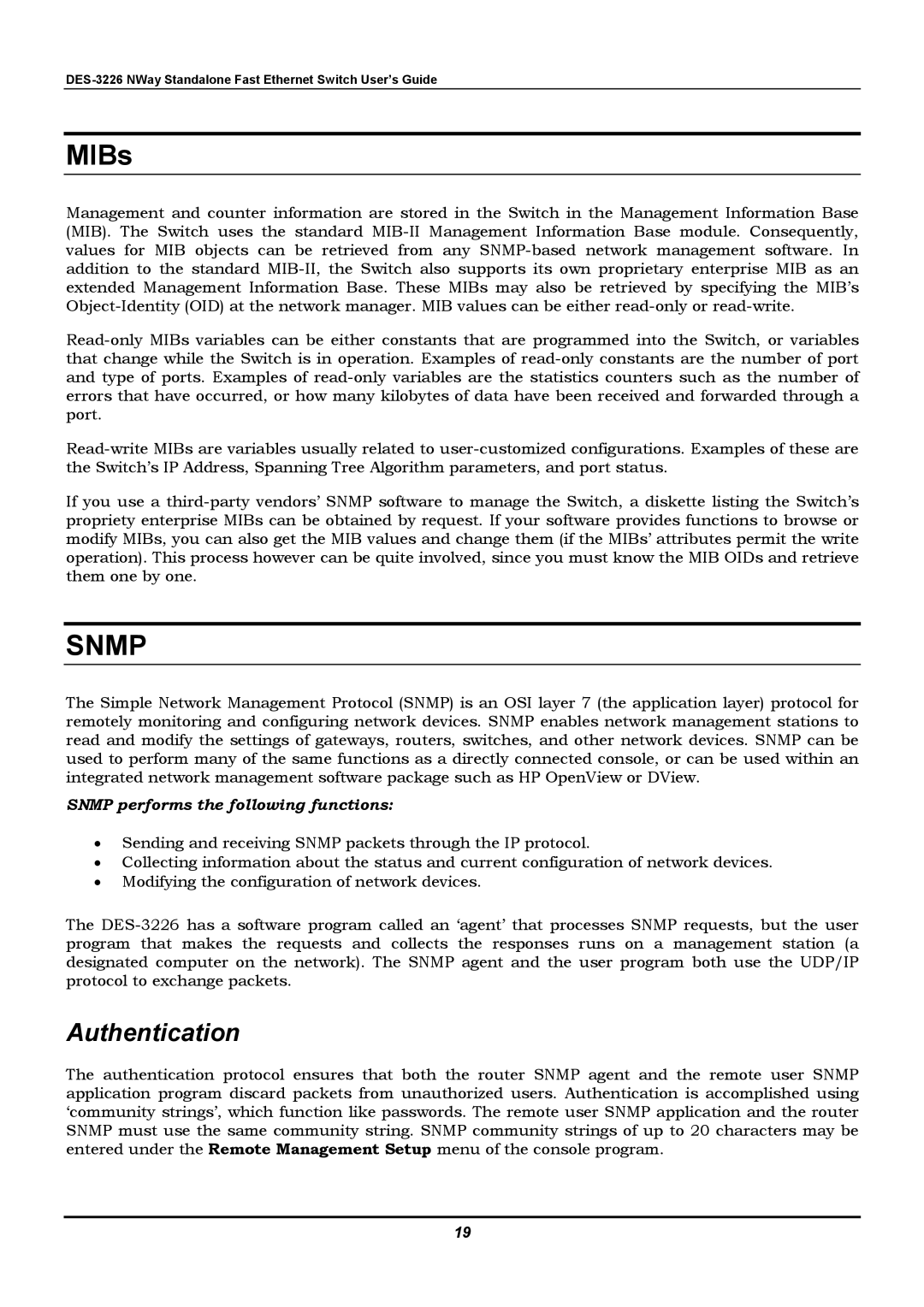
DES-3226 NWay Standalone Fast Ethernet Switch User’s Guide
MIBs
Management and counter information are stored in the Switch in the Management Information Base (MIB). The Switch uses the standard
If you use a
SNMP
The Simple Network Management Protocol (SNMP) is an OSI layer 7 (the application layer) protocol for remotely monitoring and configuring network devices. SNMP enables network management stations to read and modify the settings of gateways, routers, switches, and other network devices. SNMP can be used to perform many of the same functions as a directly connected console, or can be used within an integrated network management software package such as HP OpenView or DView.
SNMP performs the following functions:
•Sending and receiving SNMP packets through the IP protocol.
•Collecting information about the status and current configuration of network devices.
•Modifying the configuration of network devices.
The
Authentication
The authentication protocol ensures that both the router SNMP agent and the remote user SNMP application program discard packets from unauthorized users. Authentication is accomplished using ‘community strings’, which function like passwords. The remote user SNMP application and the router SNMP must use the same community string. SNMP community strings of up to 20 characters may be entered under the Remote Management Setup menu of the console program.
19
